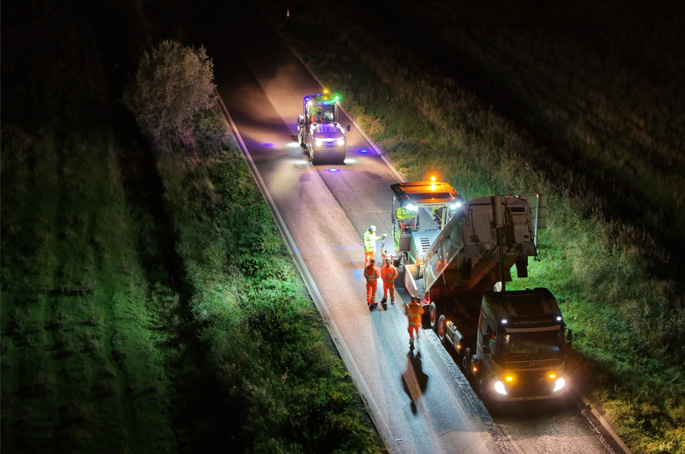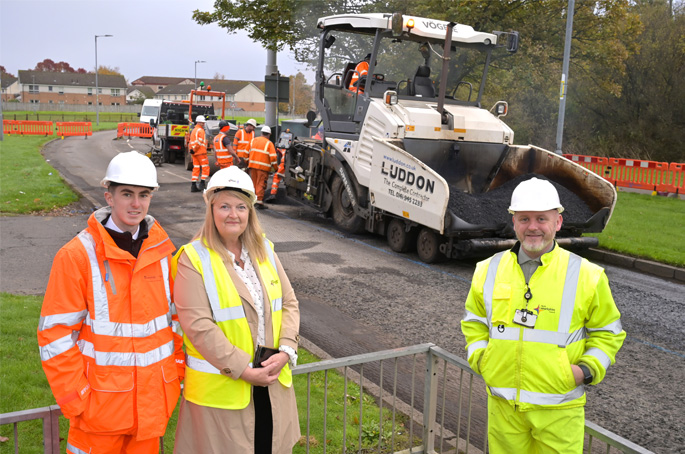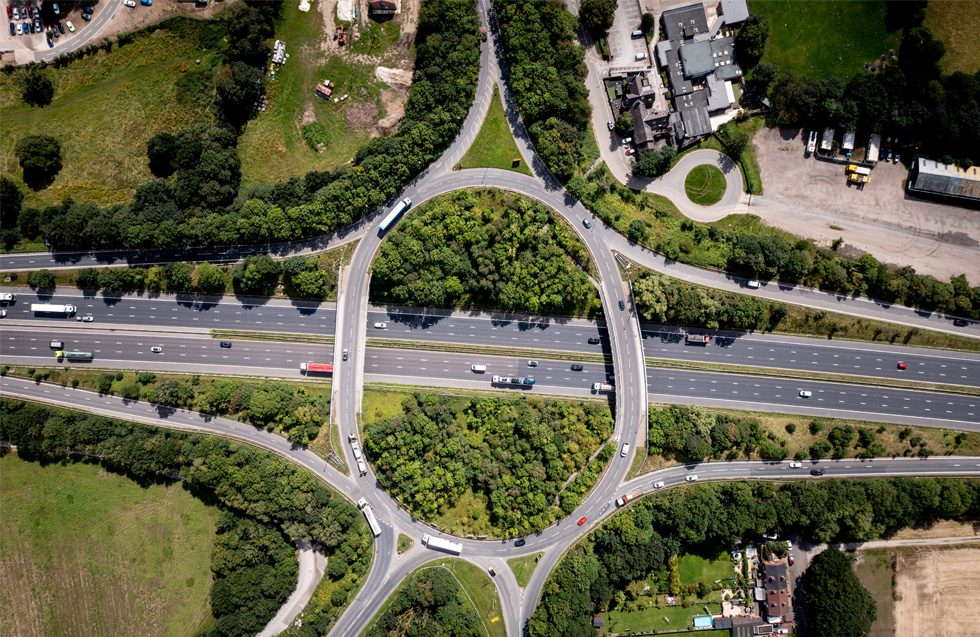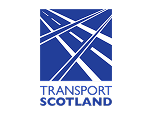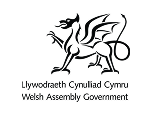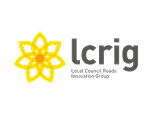National Highways is funding a trial into how biochar – a charcoal-like material made by burning organic matter at high temperatures – can be used to make ‘significant carbon savings'.
The UK-first trial, which was run by Kier and TerrAffix on the A417 Missing Link scheme in Gloucestershire, saw biochar being produced via pyrolysis from the vegetation that was removed by the scheme. It produced five tonnes of biochar on site, which saved 13 tonnes of CO2.
Pyrolysis occurs when organic materials are turned into solid carbon under extremely high temperatures in the presence of little or no oxygen. National Highways hopes that by using pyrolysis, it will reduce carbon emissions through carbon capture and via a reduction in vehicle movements, as vegetation waste will no longer be removed from sites.
The next stage of the trial will see the biochar being used as part of the A417 project for:
• Landscaping: Biochar will be mixed into the soil when planting thousands of new trees, which will help them establish and grow quicker, while removing more carbon from the atmosphere.
• Green Bridge: Biochar be used in the construction of the green bridge, which is going to be the largest green bridge in the UK at the time of building. On the bridge deck, manmade gels are normally used to help retain water in dry periods to stop plants dying. Instead, biochar will be used to store and retain the water to improve resilience.
• Microplastics: The biochar will be used to remove microplastics from highway runoff in the highway drainage system.
Once the trial is complete, a case study – which is being co-funded by National Highways and Kier – will be developed to outline the outcomes, benefits and the lessons learned.
Celine Acard, senior project manager for National Highways, said: ‘This trial is incredibly exciting because it means we can look in detail at new ways or repurposing and reusing site materials to cut down on our environmental impact.
‘By investing in innovation, we can explore new technology and solutions to protect and enhance the environment and increase biodiversity benefitting communities that live alongside our roads.'
The trial comes after Kier and RSK Group company TerrAffix carried out a feasibility study into how 'vegetation removed from highways projects can be reused on site' to cut carbon.
Kier Highways head of environment & sustainability, Matt Tompsett said: ‘We've been working with TerrAffix to prove that using the vegetation cleared as part of the A417 scheme to create biochar for reuse in the construction of the road is feasible.
‘In major highways projects we dispose of high levels of vegetation, so to be able to reuse this could be a fantastic example of applying a circular economy model to help reduce carbon and waste, while using a carbon capture and storage technique which means the carbon absorbed by the vegetation will be locked away, instead of releasing it back into the atmosphere.'
Sion Brackenbury, TerrAffix technical director, added: ‘The benefits of an on-site solution are immense. These start with the need to remove vegetation from site, achieving lorry loads of carbon savings, but creating biochar also prevents the slow carbon release to the atmosphere that would ordinarily take place through traditional vegetation processing, such as composting or mulching.
‘An additional benefit is the circular economy solution achieved through the reuse of material at a site. This offers soil enhancement opportunities and the promotion of biodiversity.'



